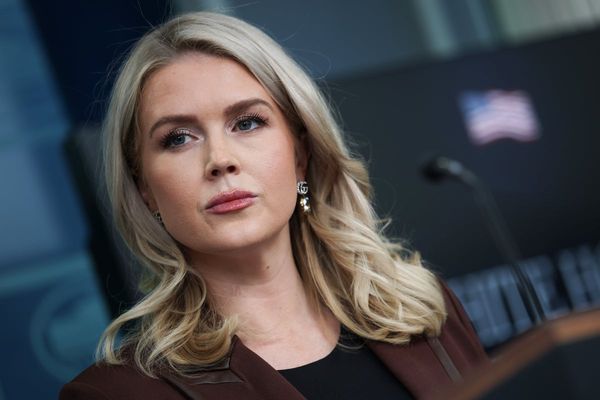
Fire and darkness, both all-consuming, are the leading themes of The Midnight Walk. A blocked sun and dead dreams, it’s down to the Burnt One and their flame to free the light or risk wandering the Midnight Walk forever. But which ending will you decide?
This is our interpretation of both endings in The Midnight Walk.
Spoiler warning for the story and analysis of the endings.
The Midnight Walk endings, summarized

There are two endings in The Midnight Walk. These are determined purely by the one choice you make in the entire game, which the Soothsayers warned you would come: The sacrifice of your flame for the sake of others. Choosing to restore the sun would bring light across the land, where there wouldn’t be the need for matches anymore. But ignoring this, choosing to do what others before you couldn’t (or perhaps never reached the end of the Worktable), would give the residents hope for a brighter future.

I believe it’s up to you to interpret whether you view the ending as good or bad. In fact, I’m not sure either one is particularly bad. When we look back at what we’ve been through, it’s clear The Midnight Walk is about the journey, not the destination. It symbolizes light and darkness, the need for both, and how we cannot learn, grow, or dream without either. The Dark Itself craved the sun, not to consume, but to feel it. Having light taken by the Maker, the Worktable suffered, where Burnt Ones would venture down the lonely path of their Midnight Walk, with the destination in mind to restore the sun’s rays, restoring hope and bringing balance to the land.
Exploring The Midnight Walk endings

Interestingly, there aren’t many differences between the two endings, and what the Soulfisher says before the credits roll is the same for both conclusions. This paints an intriguing picture of what The Midnight Walk is all about. Viewing this as a mental and physical journey the characters of the Worktable go through, we join the ride as active participants, hoping to save the world from darkness. The Midnight Walk is very symbolic of trauma, loss, and purpose, with religious undertones.
I’m going to explain how both endings affect each character we met during our Midnight Walk.
Auntie Murkle

Murkles have always dreamed of seeing the sun. The Murkle we meet tells us the origin story of Housy, the Howl’s Moving Castle-style house that follows us around and acts as a sanctuary for us to view our collectibles. Murkles have always asked, “Who took the sun away?” as curious creatures with acceptance and resilience in their heart. Seeing light in the darkness may be enough. Auntie Murkle focused on anything with warmth and brightness to distract her from the terror of an endless night. When the sun is restored, Murkle turns her attention to it, shocked to see the sun for the first time in her long life; a dream she’s had since creation. If we fail, Murkle remains at the lit campfire, warming her hands, comforted by the stars above her, yet still dreaming of seeing the sun.
Nobodyville and The Molgrim

The Bodies were removed from the Heads because they were too volatile, impulsive, and obsessed with the desire to wield the sun’s power. Jealous of The Molgrim’s cosmic connection to it, they sought its power and nearly killed an entire race for it. While fire returned to these hands may see history repeating itself, the people of Nobodyville have paid enough for their actions, as the conflict between the Heads, Bodies, and the last Molgrim has ended. Regardless of your pick, the endings appear the same for these characters, showcasing their acceptance of either outcome.
The Girl in Coalhaven

There isn’t much variation between the two endings for this scene besides the match in her hand remaining lit or finally being extinguished. We imagine restoring the sun put her spirit to rest as the flame on the match she held onto so tightly could finally be blown out. Peace would be brought upon Coalhaven, the decrepit town previously full of lost souls so desperate to pass on. But the Burnt One already guided the spirits of this town so that they could find peace and move on. The town’s residents were no longer stuck in limbo. Maybe the girl simply stayed to see the outcome and if her last match was still needed—to light the darkness for others passing through.
The Craftsman and The Princess

Nothing changes for the Craftsman and Princess. Their relationship rebuilt, both members move on from their stories, deciding on a different future for themselves. They have a common goal, a new dream, and a rekindled fire. The sun being restored or The Dark Itself remaining constant wouldn’t impact them, for their joint dream to move on is stronger than anything else. They walk in the opposite direction of the Moon Mountain, likely towards a different Worktable, a different story.
Grinners and Crawlers

The Grinners and Crawlers were created from The Dark Itself as a way to consume any kind of fire it could as sustenance and revenge against the Maker. For The Dark Itself, it wanted only to have fire, not to grow, but as payment for its existence; for you cannot have light without darkness, and darkness without light. This meant that when the sun returned, the creatures forged from darkness would perish to the light for it would consume them instead. These monsters would continue to gorge on whatever flame they could as they hungered for its strength if the Burnt One stopped Potboy.
The Soulfisher

The most interesting part of The Midnight Walk‘s endings is the Soulfisher. This character supposedly existed long before the events of the game, being present when the sun first disappeared. Before playing his banjo, he heard a sound emanating from the darkness and stayed silent ever since. The Soulfisher was looking for some inspiration, and regardless of which ending you choose, he will pick up his banjo for the first time in what we can only assume in years, to strike a chord. If the sun was restored or left, the Soulfisher had decided it was time to move on and accept whatever the outcome was.
Was the Soulfisher’s flame relit when he lifted his banjo? Where did he come from if he wasn’t born from this Worktable? My interpretation of the Soulfisher’s words is that whatever the outcome is, both were a dream that became fulfilled, being the start of a new story we only saw the beginning of. The game ends with Soulfisher wishing us—the player—to look at darkness with light in our hearts so that we may pass through it, regardless of how long the road may be.
Burnt One and Potboy

Would the Burnt One and Potboy be able to continue the Midnight Walk together should they decide to let go and leave the sun confined in clay? It’s clear one ending had both characters give their life to free the sun, a fate that was determined by the Soothsayers. The Soulfisher said we were different, but the Murkle wanted us to move on, beyond the Moon Mountain, and continue forward. But what is there for the Burnt One and Potboy aside from darkness, the same fate as everyone else? Would the flame continue to burn even though the Soothsayers told us our light was dwindling when we approached the mountain? Was this what others before us had done, or were we the first to reach the sun?
The most difficult part to interpret is why we would choose to stop. Is it because we don’t have the strength to move on? To change things? But there are so many matches in the world, and light will surely run out, leaving everything, including The Dark Itself, starved of light forever. Perhaps the Burnt One and Potboy chose to go on without freeing the sun because Burnt One knew they could keep the soul (being Potboy) alive. Rather than viewing the choice as a sacrifice of one life to save the many, The Midnight Walk showcases the strength and hope of an individual and how without it—that fire in our hearts—we’d live a lonely, unfulfilled, and aimless life. It’s only by holding onto the flame that we can continue, otherwise the darkness will inevitably consume, even if it doesn’t want to.

Everything on the Worktable (aside from those born from corrupted clay) was created with fire—a heart and soul. This inevitably burnt out along with the sun, where creatures like the Craftsman forgot what they was living for. But would the Burnt One and Potboy suffer the same fate? Would Burnt One become one of the empty clay vessels, lost on the Worktable like everyone else? Maybe something new was forged from the flame—a hope, drive, or dream outside of what was planned for them. Perhaps we did enough to remind others of their purpose and spread acceptance, being the fire they needed to move on.
Through our walk, we provided peace in some way—a beacon in the darkness for everyone we met. We already helped many, but now it’s time to help ourselves. Burning was for others, but stopping is for us. Perhaps their Midnight Walk wasn’t supposed to end on Moon Mountain.
The Dark Itself

The Dark Itself is there for us in our worst moments and can act as a comfort, a lesson, or a punishment. Darkness can be grounding. It’s not supposed to trap you, but to keep you safe inside until the light shows you the way out. It also acts as a final destination (being death). The darkness isn’t inherently bad, but we all must move on from the always-watching darkness, or risk letting it consume us. The world and its residents shouldn’t remain in the dark, for moving on from it is impossible. It’s a hopeless and aimless life without light in it.
For some, the light is too overbearing, powerful, and full of wonder, being something they want to desperately hold onto and suffocate. Others cannot handle their flame and lose it, having lost a part of themselves in return. It’s a fine line of power and control, a balancing act of having a dream and not losing sight of it along the way.







